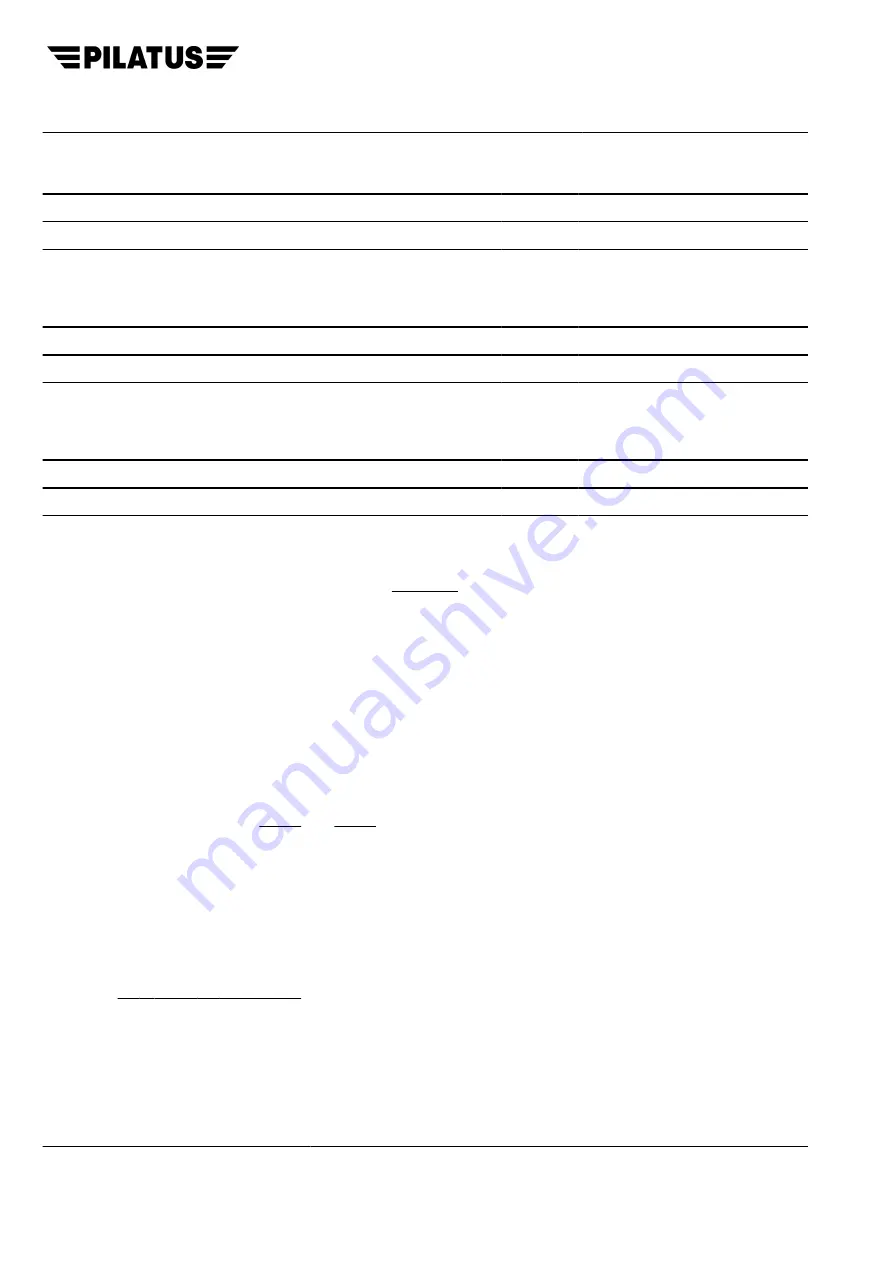
Support equipment
Table 3 Support equipment
Name
Identifications/References
Qty
Reference
Remark
None
Supplies
Table 4 Supplies
Name
Identifications/References
Qty
Reference
Remark
None
Spares
Table 5 Spares
Name
Identifications/References
Qty
Reference
Remark
None
Safety Conditions
CAUTION
ALTHOUGH SMALL DISTORTIONS FOUND ON FUSELAGE AND WING SKINS MAY SEEM SUFFICIENTLY
SMALL AS TO BE IGNORED, A CAREFUL EXAMINATION OF THE INTERNAL SUPPORTING
STRUCTURE COULD SHOW MAJOR DAMAGE.
Procedure
1
General
This examination should be done after a flight in severe turbulence or when severe maneuver conditions are
reported by the pilot.
It is possible to refine the positive and negative load factors used to determine if an exceedance is real.
Use the refinement charts (Fig. 1 and Fig. 2 ) to evaluate the exceedance limits. This requires the following
information:
−
Aircraft take-off weight
−
Fuel weight at take-off and at the time of the exceedance
−
The peak load factor recorded in the acms_aircraft_data_log_file.txt of the ACMS data.
Obtain the aircraft gross weight and fuel weight at the time of the exceedance.
Interrogate the acms_aircraft_data_log_file.txt of the ACMS data to determine the peak load factor, refer to
AMM 12-B-45-45-00-00A-551A-A. This load factor is designated g actual.
Note
The ADAHRS log files record g where 0g implies straight and level flight.
Determine the ratio R by dividing g actual by g allowable.
PC-12/47E AMM Doc No 02300, ISSUE 01 REVISION 27 MSN 545, 1001-1719, 1721-1942
12-B-AM-00-00-00-I
UNCLASSIFIED
Effectivity: All
12-B-05-50-02-00A-282A-A
UNCLASSIFIED
08.07.2021 Page 2
















































